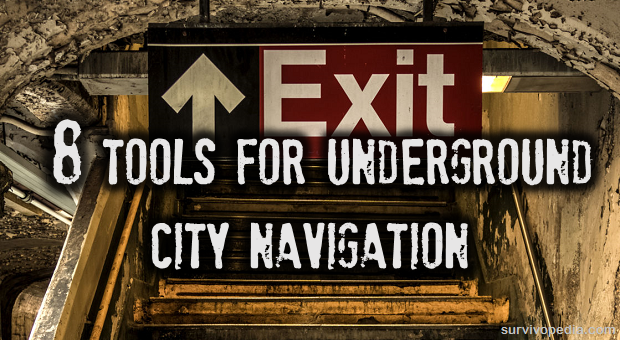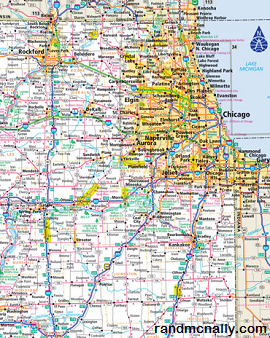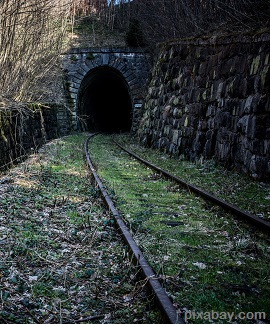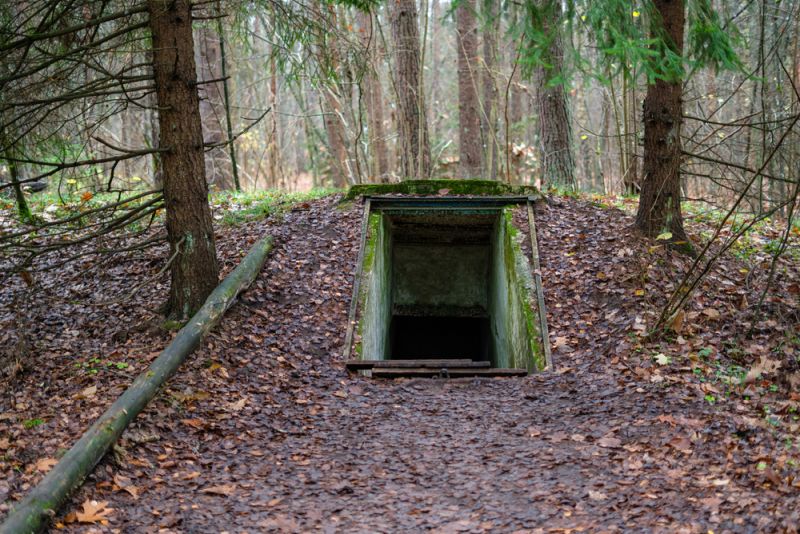
That is if you have them, because not a lot of us have ever been put in a situation where they had to get from A to B using the underground sewage system. Or even a map or a road atlas.
That’s why it would be to your advantage to know how to navigate using these older, tried and true methods. It’s never to late to start learning and practicing your skills, so I won’t drag this on anymore and get to the point.
Using Maps to Find Your Way Above Ground
How to Use Folding Street Map
A folding street map is exactly what the name implies. It is a detailed map of streets in a specific area. To be compact the map is folded up to conserve space. These types of maps were originally designed to be kept in motor vehicle glove boxes or to be carried in back packs or brief cases by pedestrians.
{adinserter emp}A street map is a grid map. Map grids are formed by vertical and horizontal lines drawn on the map. Locations on a map are expressed as grid coordinates. Grid coordinates are designed to divide the earth’s surface equally and evenly on a flat surface.
Map coordinates are the numbers and letters used to pinpoint a location. The letters are on the top and bottom of the map and the numbers are on the left and right side of the map. To locate the street that you are looking for first check the street index for the coordinates.
To locate the street on a map, read right across the bottom of the map until you find a grid coordinate that corresponds to your east-west position. Then read up the left side of the map until you reach a coordinate that corresponds to the north-south position. Where these lines cross will be the location of the street that you are looking for.
Note: On proper street maps, North is always up.
The map legend is an index and a table of contents. It tells when the map was made, a list of street names in the street name index, and all other visual information that is necessary to read and understand the map symbols.
Practice regularly on how to travel across the city without the aid of a GPS system. Get used to using maps and written directions for travel. If you have a good memory, memorize emergency travel routes to your home or to another safe location.
How to Use Bus Route Maps, Trolley Car Route Maps, and Elevated Train Route Maps
In the cities that have public transportation there are usually bus, trolley car, or elevated train route maps at each of the larger stops mounted in a protected frame. These maps are grid maps and can be used to find locations the same way you use a standard city grid map.
There are usually free copies of the maps at these stations to help you find your way when not at the larger protected route maps. These maps may not have a lot of detail, but they will give you a general idea about which way to go.
How to Use the Rand McNally Road Atlas

The atlas shows main roads, secondary roads, and major city and county roads. They keep track of all new construction and highways that are being taken out of service. If you have an older atlas, try comparing it to newer ones. Even if there are roads taken out of commission, you may still be able to travel along on foot as opposed to trying to navigate through more difficult places.
These abandoned roads may also be overlooked by anyone trying to stop you from leaving the city. If you aren’t certain about the status of an unmarked road, take some time to visit it when you will not be readily observed in the area. If you notice unusual activity, then it may not be a good idea to try that road during a crisis situation.
To use an atlas, turn to the state you are looking for. Then the specific location within that state in the road or location index. Finally use the map coordinates to locate the location or road you are looking for.
How to Travel Underground
In a time of crisis it may be to dangerous to travel on the city streets. Because of this you will have to find alternate safe ways to travel to get home or to leave the city. To prepare and to practice safe ways of travel will give you and your family the edge in a world gone mad.
How to Read Subway Maps
Subway maps are not grid maps, these maps are subway route maps. Like a grid map, those routes that go up and down travel north-south. The routes that go across the north-south routes are the east-west routes just like the streets above.
Most subway maps come in the following types.
- The whole subway system map which shows all routes of the system.
- Individual subway route maps that give better detail of a subway route in a particular area.
- Neighborhood maps that show all subway routes going through a particular neighborhood in a city.
Since the subway was tunneled underground each route is color coded, lettered, or numbered and is given a route name.
- The colors, letters, and numbers define the transit routes.
- The maps will show you which routes go east-west or north-south.
- Each station is clearly marked on the map.
- Each station is clearly marked with the station name on the walls in big letters.
As you enter a subway station from the street there are information signs that tell you the station name or location and if it is open or not. These signs are usually located above the stairs as you enter the station level.
In every station there is an information board that has a large detailed whole subway route map and subway train time schedules. You can always get free subway maps and schedules in this area.
When using a subway map you need to know where you are at and where you wish to go. Say that you are at 5Th ave. and 59Th st. and you wish to go to Time Square and 42St. The subway routes that service 5 Th ave. and 59Th st. are the N, Q, and the R. The subway routes that go to Times Square and 42St. are 1, 2, 3, 7, A, C, E, N, Q, R, and S. So the N, Q, and R trains will make the trip.
In a time of crisis subway construction maps, abandoned subway tunnel routes, and out of service station locations would be a helpful tool for getting around a major city without the general public knowing of these routes. These maps may be obtained from a construction company’s public relations office that is doing the new subway construction or the city public works department.
Know which Direction Tunnels Go in Your City

In the beginning of a crisis it may be safe to use a tunnel to get out of a city. As the crisis continues there will be uncontrollable traffic jams and grid lock that could make these tunnels unusable and dangerous to use or be in. Most modern tunnels have emergency closing doors that can seal off the tunnel in an emergency situation and possibly trap those individuals inside.
If the crisis was one of biological or nuclear in nature, all roads, bridges, and tunnels would be closed due to martial law in the city to control the population from spreading disease and contamination. With martial law comes the use of deadly force to further control the people and the crisis.
You can also use storm water sewer maps, sewer system maps, and underground utility tunnels and vault maps (natural gas, water, electrical, steam, or other utility services). In the older larger cities there are miles upon miles of underground storm water sewers, raw sewage sewers, and combined sewer systems. Each have their good points and each have their bad points as escape routes.
How to Use Raw Sewage Sewers
Raw sewage sewers just transport raw human sewage away from buildings and sends it to a sewage treatment plant. At the treatment plant the sewage is decontaminated and released to the ocean, rivers, or streams. The nice thing about these sewers is that they run all over the city. Unfortunately, if you use these sewers even with waders and other protective clothing, there is still a great chance of you getting contaminated and sick from being exposed to the raw sewage.
How to Use Storm Water Sewers
Storm water sewers just carry rainwater run off. When it is not raining these sewers make a good underground pathway to all parts of the city. If you get caught in these sewers during or after rainstorms flash flooding could kill you by drowning. For safety sake, know what the weather is going to be before going underground and do not forget to wear your waders. Storm water is usually sent directly to lakes, rivers, streams, or to the ocean, so following them will take you out of the city and possibly quite far from it.
How to Use Combined Water Sewer Systems
Combined sewer systems are designed to carry raw sewage, industrial waste water, and rainwater runoff in the same pipes to waste water treatment plants. Not only does this treatment plant treat raw sewage, but it must remove all kinds of toxic waste compounds from the water as well. When industrial waste compounds are mixed up in the sewer system water, no one truly knows how dangerous and what kind of a health hazard exists. Therefore, it is hard to say what will happen to your health if you are traveling unprotected in these sewers.
Where to Get Your Maps From
For secrecy sake and if you have some knowledge of map making, it would be to your advantage to make your own maps for traveling around the city. If you are planning to use the storm water system only, then you could walk the proposed rainwater routes on the surface then make your map. Test the routes to ensure that they will work out for you.
If you are not very good at making maps or the city is too large, then you will need to locate city maps that will be detailed enough for you to make multiple travel routes through different types of terrain. When you are traveling in a crisis situation to either your home or trying to leave the city, it would be to your advantage to use a route that has a very little chance of you being seen or followed. With multiple route plans, if there is a problem on one route, all you have to do is to switch it to another route and continue on your way.
The following is a list of places where you might locate underground maps of your city:
- City public works office.
- The city planner’s office.
- The city building permit office.
- The city records office.
- If you can’t find maps in these places, the city clerk may be able to direct you to a viable source.
- If the city is very old and has a lot of classic architecture there is a good chance that some of the old underground utility tunnels may be intact, and old maps of the tunnels may be found at the city’s public library.
- In some of the older cities in this country like New York City, they also have a lot of natural caves in and around the city. With a little research it might be possible to locate old caving map books or old city maps in a library research section. Even though these caves and tunnels may have been abandoned for decades, you may still be able to travel through them safely.
Now that you know the basics of underground traveling during disaster, all that’s left to do is practice. Try different routes in your area and see how you manage to get there without using any electric device. And by “routes” I don’t mean a trip to the corner store.
Interested in surviving blackouts? CLICK HERE to find out more!
This article has been written by Fred Tyrell for Survivopedia.
Further reading:
https://www.google.com/#q=how+to+find+your+way+in+a+city
http://www.omnimap.com/catalog/cats/atlases.htm
https://en.wikipedia.org/wiki/Street_layout_of_Seattle
http://www.wikihow.com/Ride-the-New-York-City-Subway
http://bigappled.com/2014/09/25/18-hidden-secrets-nyc/
http://www.npr.org/2013/09/14/222525583/new-york-underground-exploring-city-caves-and-catacombs








Pingback:8 Tools for Underground City Navigation | Freedom Newz | October 6, 2015
|
Pingback:8 Tools for Underground City Navigation - Survivalot | October 6, 2015
|
Pingback:8 Tools for Underground City Navigation - Survival By Preparedness | October 6, 2015
|
EddieW | October 6, 2015
|
If the power was out, could I heat my home or a room by filling a steel soup can with coins and putting it on my alcohol burner….should the coins be cleaned first, so no odors vapors etc.?
Pingback:8 Tools for Underground City Navigation | October 7, 2015
|
Pingback:8 Tools for Underground City Navigation | TheSurvivalPlaceBlog | October 7, 2015
|
aNONYMOUS | October 7, 2015
|
I can see some issues right off the bat. 1. To be able to use maps, you would first need to have them…with you…when you need them…thus you would have to have them…at all times. 2. Governments may not be too forthcoming with SS or SD maps. You might have to do some explaining as to why you would want “ALL of your SS or SD maps.” 3. The pipes can be rather small…you may need to be able to crawl for miles. 4. You better know where the pipe goes beforehand. Keep in mind, that the pipe may not stay a pipe, but could become nothing more then a ditch that may be located next to a road or immediately behind peoples houses. It would be a good idea to know about this beforehand, so you don’t get an unpleasant surprise. 5. Better not have claustrophobia. The inside of the pipe will be pitch black…and may be quite small. 6. You never know what may be lurking inside. Bugs, people with unknown intentions, even toxic gas could be in there. Homeless people will sometimes sleep in SD pipes or ditches. What would you do if that “pile of trash” suddenly started moving? I used to be homeless, and I got really good at camouflaging myself. So, if you see a “pile of trash” be sure to walk around it, because there could be someone in there sleeping. Considering that in the immediate aftermath of such an even, a homeless person may not be aware of what just happened, and may think that you are up to some nefarious activities. The whole idea behind sleeping there is that “no one comes around here,” and suddenly there is someone else there. 7. Light and sound discipline. Light in a long straight chamber can be seen from a long distance. It would be best to have infrared. Night vision would require that there be some light. You have NO light. In a world of quiet, the slightest sound can carry for considerable distance, especially when you are inside a concrete tunnel that has nothing better to do then to reflect every sound you make.
Cache Valley Prepper | October 8, 2015
|
Fred,
I designed an option into a plan to escape a portion of the Metro-Phx area using the storm drain system. I have explored some large parts of that system and would love to chat with you about it if you’re not burnt out on the subject. : )
Cache Valley Prepper
[email protected]
Pingback:8 Tools for Underground City Navigation | Trailer Park Prepper | October 8, 2015
|
Pingback:How To Choose Your Gun Cleaning Kit | Freedom Newz | October 15, 2015
|
Pingback:Preparing For Nuclear Disaster: How To Stay Informed | The Prepper Dome | November 21, 2015
|
Pingback:Survival Scenarios For Disabled: How To Escape From Fire | Survivopedia | January 20, 2016
|
Andi | February 23, 2016
|
One more reason not to rely on GPS is it would not work underground even if the system were not fried by EMP. Did I miss any reference to using a compass with whatever maps you would have? I think it would be desperate indeed to become a tunnel rat. But I would do it if that was my best (least worst)option to safety.
Pingback:Urban Survival: 10 Worst Places To Hide In The City If SHTF | Survivopedia | December 17, 2017
|